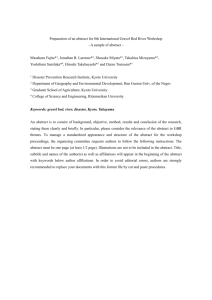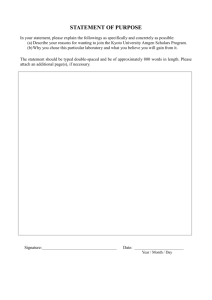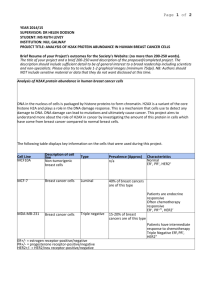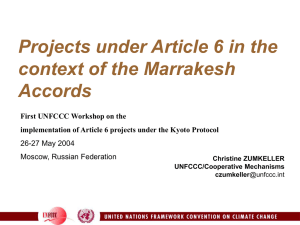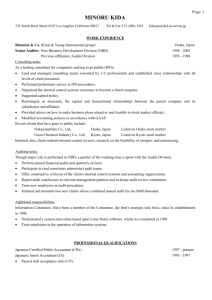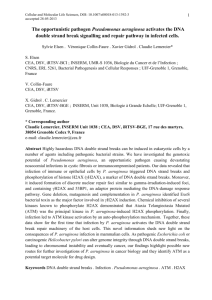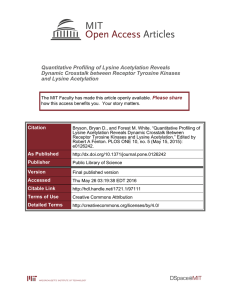Absolute quantification of acetylation and phosphorylation of the
advertisement
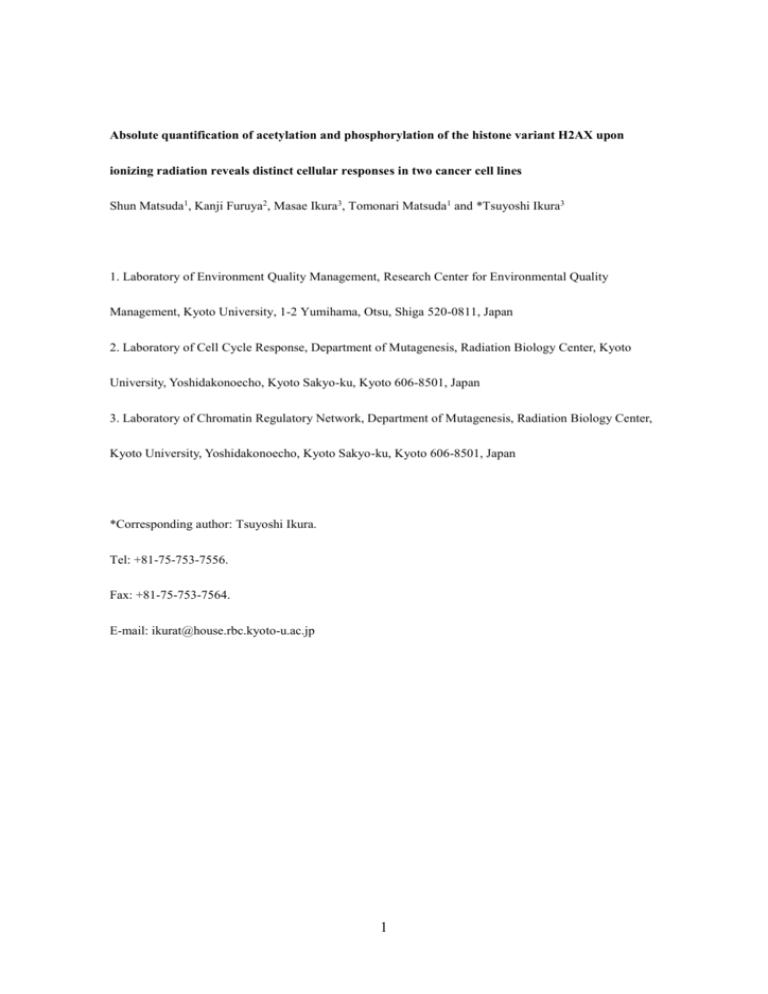
Absolute quantification of acetylation and phosphorylation of the histone variant H2AX upon ionizing radiation reveals distinct cellular responses in two cancer cell lines Shun Matsuda1, Kanji Furuya2, Masae Ikura3, Tomonari Matsuda1 and *Tsuyoshi Ikura3 1. Laboratory of Environment Quality Management, Research Center for Environmental Quality Management, Kyoto University, 1-2 Yumihama, Otsu, Shiga 520-0811, Japan 2. Laboratory of Cell Cycle Response, Department of Mutagenesis, Radiation Biology Center, Kyoto University, Yoshidakonoecho, Kyoto Sakyo-ku, Kyoto 606-8501, Japan 3. Laboratory of Chromatin Regulatory Network, Department of Mutagenesis, Radiation Biology Center, Kyoto University, Yoshidakonoecho, Kyoto Sakyo-ku, Kyoto 606-8501, Japan *Corresponding author: Tsuyoshi Ikura. Tel: +81-75-753-7556. Fax: +81-75-753-7564. E-mail: ikurat@house.rbc.kyoto-u.ac.jp 1 Figure captions Fig. S1 Trypsin-cleavage sites of the N-terminus of H2AX with the different modification(s) Fig. S2 Dose-response curves of H2AX phosphorylation and acetylation induced by IR. Histones were purified from HeLa cells or U-2 OS cells treated with the indicated doses of IR, followed by a 15 min recovery period. Peptides corresponding to H2AX with the indicated modification were quantified by LC/MS/MS analysis. Mean ± SD, n = 3 Fig. S3 Time course of H2AX phosphorylation and acetylation induced by IR. Histones were purified from HeLa cells or U-2 OS cells treated with IR (2 Gy), followed by the indicated durations of recovery. Peptides corresponding to H2AX with the indicated modification were quantified by LC/MS/MS analysis. Mean ± SD, n = 3 2 Fig. S1 3 Fig. S2 4 Fig. S3 5
